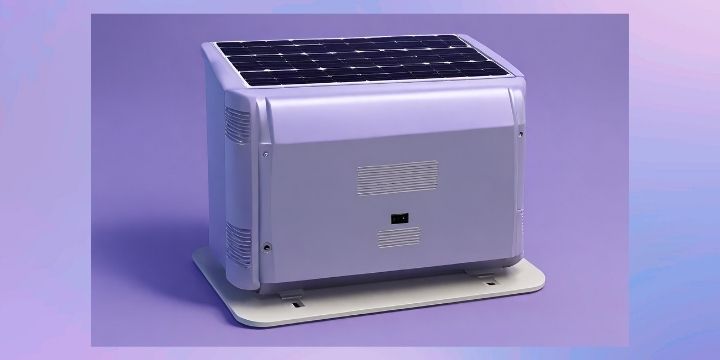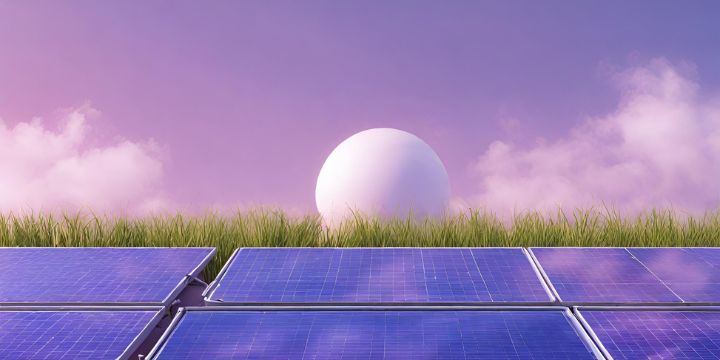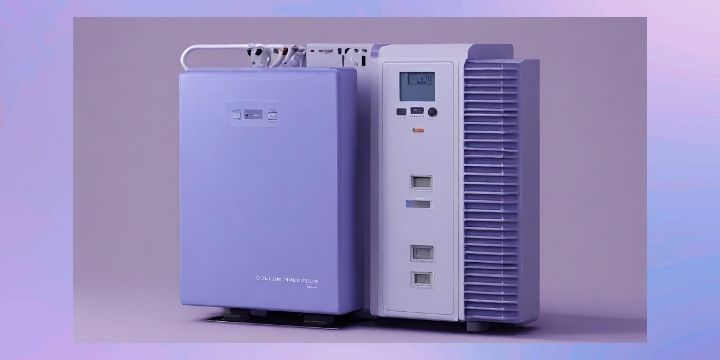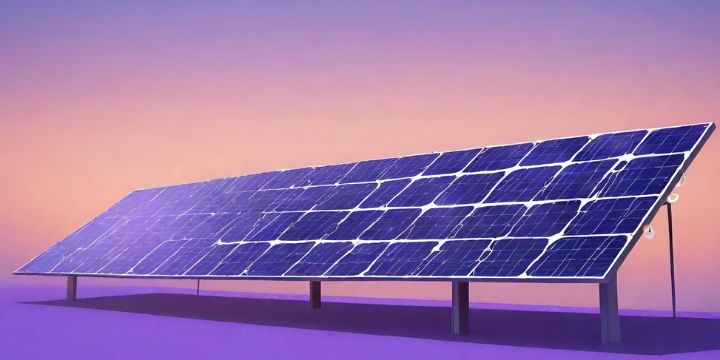The Dangers of Heat on Solar Inverters
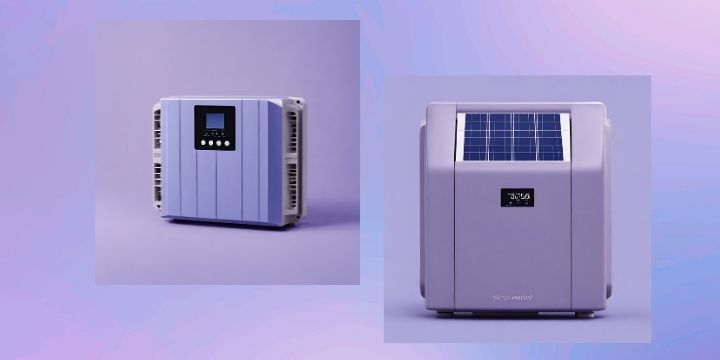
What is the effect of heat on solar inverters?
As a homeowner with a solar panel system, you have made an investment in renewable energy and reducing your environmental footprint. However, your solar inverter, the device that converts the DC power from your panels to usable AC power, requires proper maintenance and care to function efficiently.
Related: How to Choose The Right Solar Inverter.
Reliable Power Anywhere
Experience the freedom of portable power with Bluetti's cutting-edge solar generators and power stations. Whether you're camping, preparing for emergencies, or reducing your reliance on the grid, Bluetti offers reliable, eco-friendly solutions that keep you powered up anywhere.
Explore Bluetti Products NowExtreme heat can pose risks to your solar inverter, potentially reducing its lifespan and performance.
During the summer months, solar inverters have to work harder to cool internal components, and high temperatures over prolonged periods put strain on sensitive electronics.
By understanding how heat impacts your solar inverter, you can take proactive steps to prevent overheating and ensure it continues providing clean energy for years to come.
With some simple preventative actions, you have the power to keep your solar system running cool all summer long.
Go Green with Bluetti
Take a step towards sustainability with Bluetti’s advanced solar technology. From high-capacity power banks to efficient solar panels, Bluetti helps you harness the power of the sun to reduce your carbon footprint without compromising on performance.
Shop Sustainable Power SolutionsHow Solar Inverters Work and Why Heat Impacts Performance
Solar inverters convert the DC power generated by photovoltaic panels into usable AC power for homes and businesses. However, inverters operate most efficiently at lower temperatures and can suffer power losses and damage at higher internal temperatures.
Inverters contain sensitive electronic components like transistors, diodes, and capacitors that are designed to work best within a specific temperature range, usually around 77°F or 25°C. As internal temperatures rise, the performance and lifespan of these components decline. Most inverters will experience reduced power output, known as derating, starting around 113-122°F or 45-50°C.
The Impact of High Heat on Solar Inverters
When inverters overheat, their efficiency and maximum power point drop, reducing the amount of energy harvested from PV modules. In extreme heat, inverters can fail completely, and the output and longevity of the solar panels themselves are compromised.
Sustained high temperatures accelerate the aging of inverter components, shortening the device’s overall lifetime and mean time between failures.
To avoid the damaging effects of overheating, installers must ensure proper ventilation, airflow, and possibly cooling for inverters. Strategically placing inverters in shaded, sheltered locations and allowing adequate space around the units can help regulate temperature. More active solutions like fans, heat sinks, and air conditioning provide cooling to maintain inverter performance and maximize system returns on investment. With the right safeguards and temperature management, solar inverters can operate efficiently for decades.
The Effects of High Temperatures on Solar Inverter Components
High ambient temperatures can have detrimental effects on solar inverters and reduce their operational efficiency and lifespan. Prolonged exposure to heat causes damage to internal components and materials, negatively impacting inverter performance and longevity.
The Effects of High Heat on Inverter Components
The enclosure, wiring, and printed circuit boards in an inverter are all susceptible to heat damage. As temperatures rise, the materials these components are made of begin to degrade and break down, compromising their integrity and functionality.
Over time, high heat causes the inverter enclosure and wiring insulation to become brittle, increasing the risk of cracks and exposed live wires.
Power Your Adventures
Don't let power outages or off-grid adventures slow you down! Bluetti's portable solar-powered solutions are designed for convenience and efficiency, making them the perfect companion for any lifestyle.
Discover Bluetti's Portable PowerElevated temperatures also accelerate the oxidation of printed circuit boards, which can lead to loose or broken solder joints and connections. This damage impairs the ability of components to function properly and transmit signals, reducing inverter efficiency.
Semiconductors like IGBTs (insulated-gate bipolar transistors) and MOSFETs (metal-oxide-semiconductor field-effect transistors) are also sensitive to overheating.
Prolonged high temperatures degrade these devices by disrupting their delicate atomic structures, shortening their operational lifespans. When semiconductors fail, the inverter loses its ability to convert DC to AC power and shuts down.
By understanding the effects of excessive heat on the materials and components inside solar inverters, steps can be taken to improve temperature regulation and extend the inverter’s lifetime through proper installation, ventilation, and maintenance. Protecting inverters from high temperatures will help ensure optimal performance and a long, productive service life.
Tips to Keep Your Solar Inverter Cool and Efficient
To ensure optimal performance and longevity of your solar inverters, managing heat levels is critical. Excessive heat can reduce efficiency and damage components over time. Here are some tips to keep your solar inverter operating at a cool, productive temperature:
Select an inverter with built-in cooling
Choose an inverter model with integrated heat management features like fans, heat sinks, or liquid cooling systems. These mechanisms can decrease temperatures by up to 15°C, increasing energy output. Inverters without cooling components will require external methods to regulate temperature.
Place the inverter in a well-ventilated area
Position the inverter in an open space away from heat sources like attics or garages. Install in an area with good airflow and ventilation, such as under solar panels. Avoid direct sunlight which can cause overheating.
Provide shade and insulation
If installing the inverter in an outdoor location, provide shade from the sun. You can construct a simple roof overhang or install a weather-resistant casing around the inverter. Insulation helps maintain moderate temperatures in very hot or cold environments.
Monitor temperature regularly
Check your inverter temperature periodically, especially on very hot days. Most inverters will shut down if internal components reach dangerous temperatures to prevent permanent damage. Observe the inverter display for overheating warnings and take action quickly to remedy the situation.
Consider an external heat exchanger
For inverters without built-in cooling, an external heat exchanger can help dissipate heat. Heat exchangers containing fans and heat sinks attach to the inverter to draw heat away and lower the overall temperature. These devices can be installed by a solar professional if DIY installation is not possible.
Keeping your solar inverter at a consistent, moderate temperature will maximize energy production and ensure it continues operating safely and efficiently for many years. Monitoring and managing heat levels with the proper techniques can help avoid costly damages or replacements down the road.
Conclusion
In summary, heat is a serious issue for solar inverters and can negatively impact their performance and lifespan if not properly addressed. As a homeowner with a solar energy system, it is critical to understand how heat affects your inverters and take appropriate precautions.
By installing your inverters in a cool location, properly ventilating the area, and cleaning inverters regularly to prevent overheating, you can help ensure maximum efficiency and long service life for these important components.
While solar energy is an excellent source of renewable power, the technology still requires proper maintenance and care. By staying informed and taking proactive steps to prevent overheating of inverters, you can enjoy the benefits of solar for years to come.
Disclosure: We may earn commission for purchases that are made by visitors on this site at no additional cost on your end. All information is for educational purposes and is not intended for financial advice. Read our affiliate disclosure.

